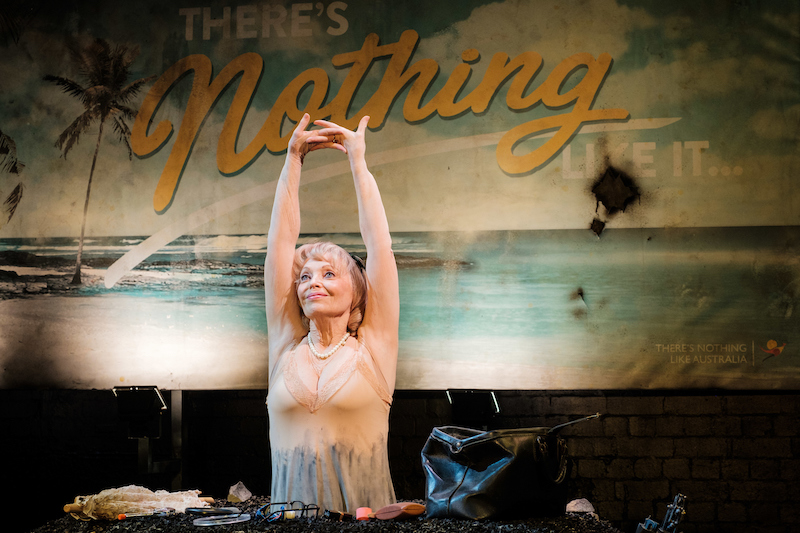Samuel Beckett’s absurdist, existential masterpiece Happy Days, premiered in New York in 1961, then opened in London the following year. It is now regarded as one of theatre’s great contemporary classics, named by The Independent in 2019 as one of the 40 best plays of all time.
It may be celebrating its 60th anniversary, but Happy Days continues to speak in its strange but powerful way to audiences, its meaning and resonances morphing as time passes, so that it somehow always feels timely.
 Belinda Giblin in Happy Days. Photograph © Robert Catto
Belinda Giblin in Happy Days. Photograph © Robert Catto
Set in an apocalyptic wasteland, the play features two characters, the cheerful, determinedly optimistic Winnie and her taciturn husband Willie. In Act I, Winnie is buried in a mound of earth up to her waist; in Act 2 the mound reaches her neck.
Woken by a piercing bell, Winnie chatters away as she pulls things from a black bag – an old toothbrush, an almost empty tube of toothpaste, the final remains of a lipstick, a music box and a gun, among other things – which she uses in ritual fashion to help pass the day.
She tries to recall memories from long ago...










Comments
Log in to join the conversation.